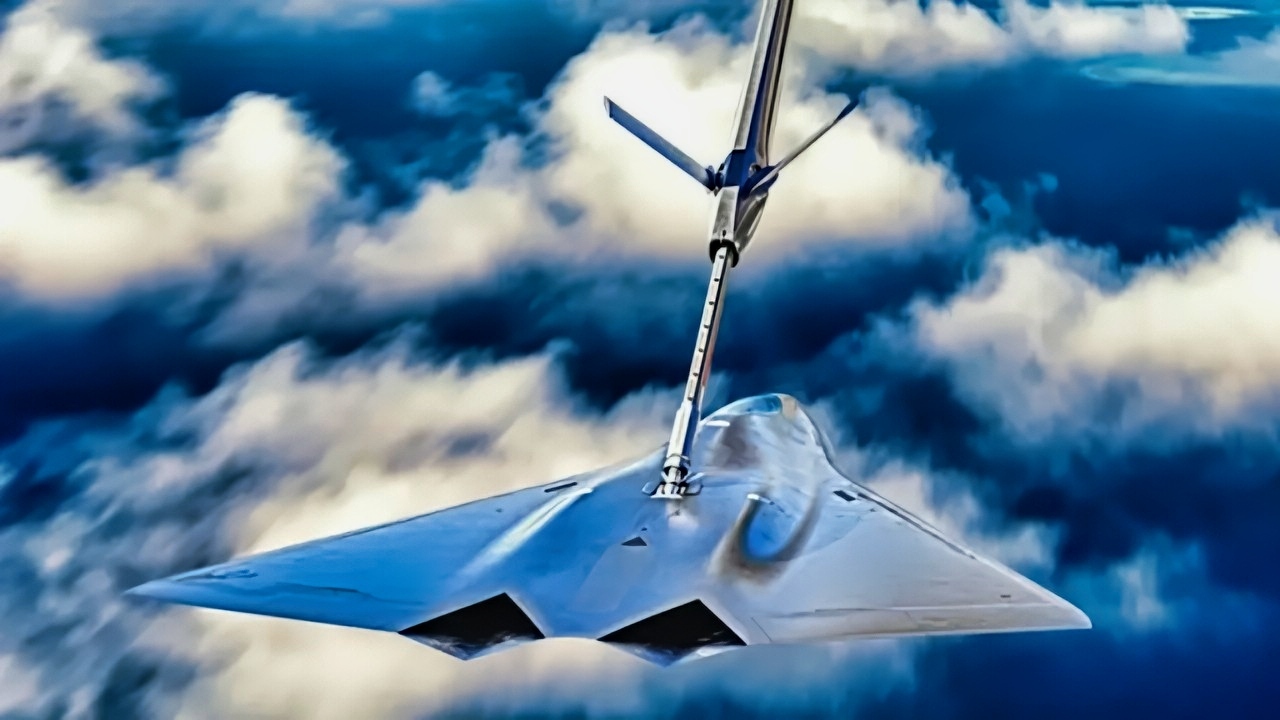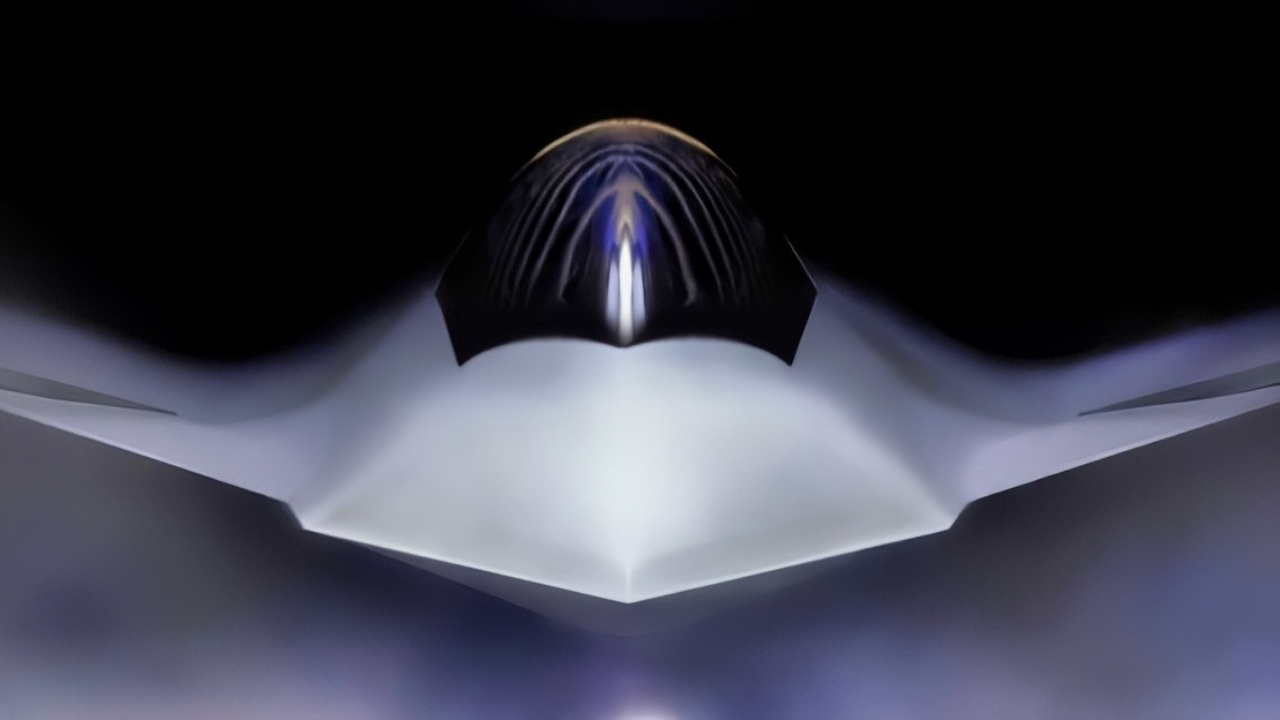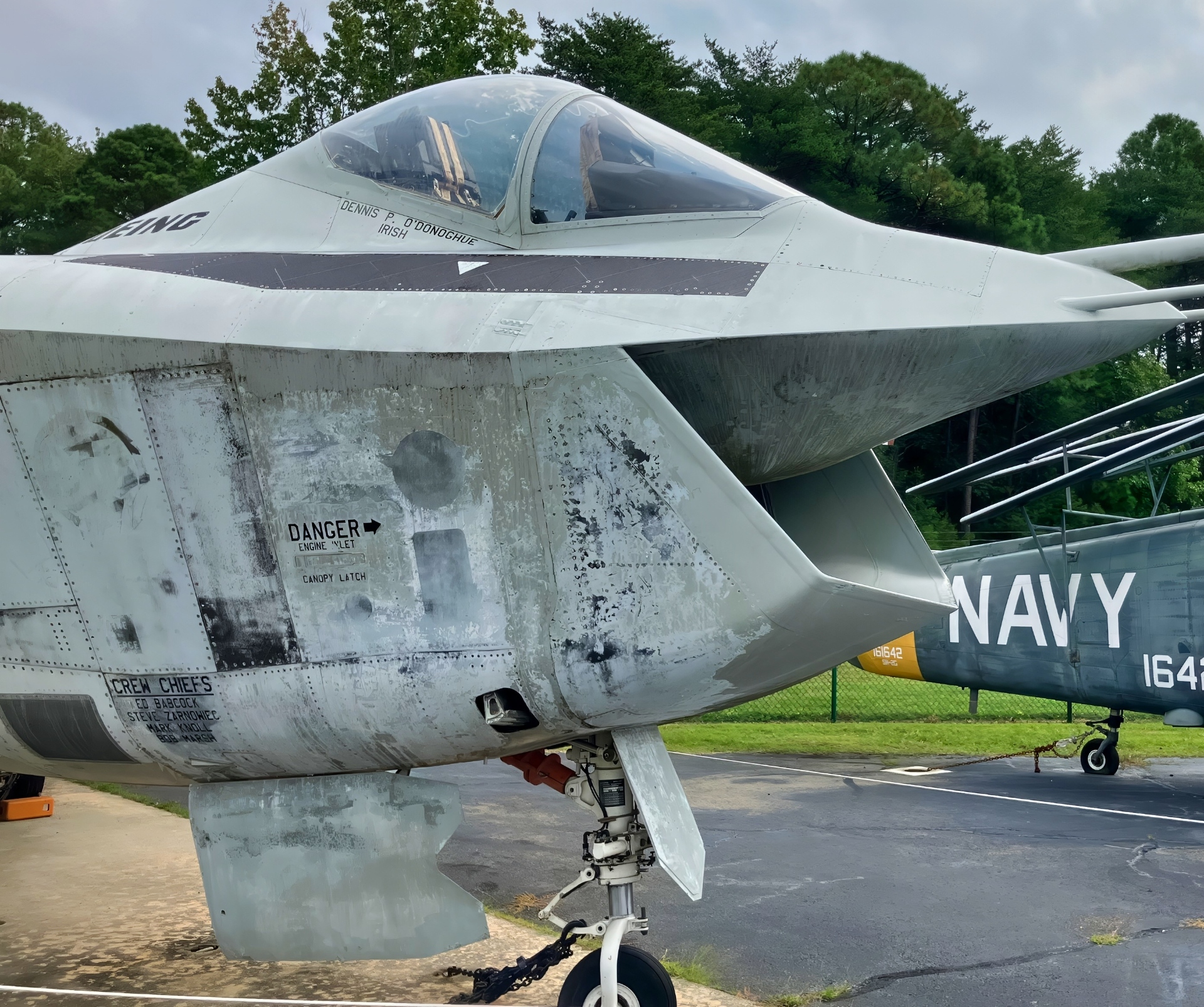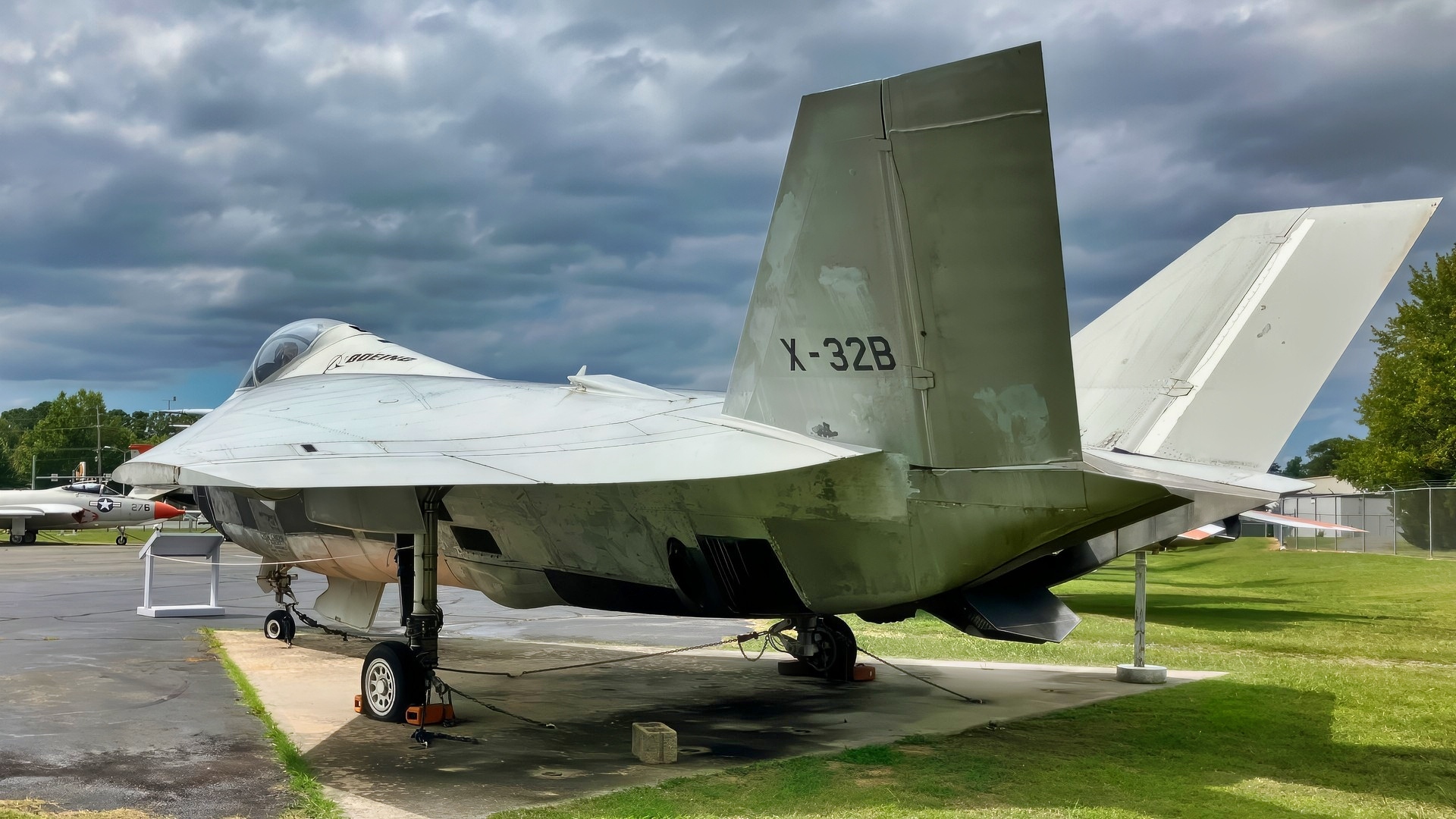Key Points and Summary – Boeing won the F-47 NGAD 6th-generation fighter contract over Lockheed Martin due to a combination of factors.
-According to reports, Boeing’s proposal demonstrated superior “digital maturity” with a full-scale “digital twin,” reducing risk.

F-47 Lockheed Photo. Image Credit: Lockheed Handout.
-Critically, the Air Force made a deliberate decision to “diversify the defense industrial base” rather than give another major stealth fighter program to Lockheed (maker of the F-22 and F-35). Boeing’s design was also seen as more mature, leveraging years of DARPA X-plane testing.
-The win serves as a crucial “corporate lifeline” for the struggling company and “sweet revenge” for losing the F-35 contract.
How and Why Did Boeing Beat Out Lockheed Martin for the F-47 NGAD Contract?”
Interservice rivalries within the United States Armed Forces are well known.
In the sports world (particularly the gridiron), these rivalries are quite intense but (mostly) friendly.
When it comes to turf battles within the hallowed halls of the Pentagon to secure Congressional dollars, however, those rivalries can—and ofttimes do—become a good bit more acrimonious.
And once those budgetary battles are finally settled (at least for the latest fiscal year), another rivalry kicks in: the rivalry of individual defense industrial firms as they engage in bidding wars to win contracts for the individual services to build various weapons systems.
One particularly long-running rivalry in the arena of military aviation manufacturing is Boeing vs. Lockheed Martin (notably LM’s famed “Skunk Works” division).
Earlier this year, the former won a major bidding battle over the latter for the US Air Force’s F-47 Next Generation Air Dominance (NGAD) 6th-generation fighter contract.
But how and why exactly did Boeing pull off this coup?
The Basics/Bottom Line Up Front (BLUF)
A handy source of insight into the Boeing F-47 bidding victory comes to us courtesy of Simple Flying reporter Antonio Di Trapani in an October 27, 2025, article titled “The Real Reason Why Boeing Is Building The F-47 Stealth Fighter And Not Lockheed.”
“Behind that decision lay months of evaluation. One of the strong points of Boeing’s proposal was its level of digital maturity. Engineers had already built a full-scale ‘digital twin,’ allowing the Air Force to analyze everything from radar signature to maintainability before the prototype ever flew. That reduced risk in ways Lockheed’s more experimental design couldn’t match.”
Perhaps even more significant was this major selling point: “Awarding the F-47 to Boeing was a deliberate move to diversify the defense industrial base, a principle often emphasized in congressional oversight reports and echoed by The Washington Post, which noted ‘the decision also diversifies the production of US military jets.'”
In other words, following the commonsense principle of not putting all of one’s proverbial eggs in one basket. This avoids becoming overly dependent on a single supplier for all the Department of Defense’s (so-called Department of War’s) warbird needs.

Shown is a graphical artist rendering of the Next Generation Air Dominance (NGAD) Platform. The rendering highlights the Air Force’s sixth generation fighter, the F-47. The NGAD Platform will bring lethal, next-generation technologies to ensure air superiority for the Joint Force in any conflict. (U.S. Air Force graphic)
Additional Considerations
Another factor was the issue of program maturity and risk reduction. Boeing’s design was based upon years of experimental “X-plane” testing sponsored by the Defense Advanced Research Projects Agency (DARPA), which explored adaptive engines, advanced stealth materials, and artificial intelligence (AI)-driven flight control.
This, in turn, gave Boeing a significant head start in readiness, thus laying a much smoother foundation for the NGAD platform.
A third factor was strategic urgency to keep pace with so-called “near peer” Great Power competitors: Russia and China have already been developing their own 6th-generation fighters like the MiG-41 (AKA PAK DP) and the Chengdu J-36 respectively, not to mention 5th Generation stealth jets like the Sukhoi Su-57 “Felon“, Su-75 “Checkmate,” and Chengdu J-20 “Fagin.”
Ergo, the USAF needed speed as well as stealth, and Boeing’s foundational advantage described in the previous paragraph made it a logical choice to provide that speed-and-stealth combo.
Last but not least, there’s what Di Tripani calls a “corporate dimension,” but could just as easily (and bluntly) be termed a “corporate lifeline.”
After being plagued with one embarrassing scandal after another on its civil aviation side of the house, Boeing needed a long-term defense contracting victory to offset those reputational blows.
The NGAD provided just what the doctor ordered: a grand opportunity to rebuild credibility, stabilize its St. Louis fighter plant, and bring aboard a new infusion of engineering talent.
Sweet Revenge for Boeing Against Lockheed
Though this may not be publicly acknowledged by the execs of either company, winning the 6th Generation F-47 contract gives Boeing a bit of a “last laugh” over Lockheed, two-and-a-half decades after the latter firm’s X-35 (what we now know as the F-35 Lightning II) beat out the former firm’s X-32 for the Joint Strike Fighter (JSF) 5th-generation stealth fighter competition.

Sideview of Boeing X-32B In Maryland.

Boeing X-32 Stealth Fighter in Maryland. Image Credit: National Security Journal.
(The X-32 now sits in deteriorating health—due to constant exposure to outdoor elements—at the Patuxent River Naval Air Museum [PRNAM] adjacent to NAS Patuxent River in St. Mary’s County, Maryland. I know it, I saw it up close.)
Moreover, the F-47 will be Boeing’s first truly original production-phase fighter plane since the 1932-vintage P-26 Peashooter.
During the Cold War, the company became better known for big, lumbering, subsonic jet planes such as the B-52 Stratofortress (AKA the “BUFF”) on the military side and the 747 “jumbo jet” on the civilian side. (Yes, the F-15 Eagle and F/A-18E/F Super Hornet are both officially Boeing products, but those were basically inherited from the company’s merger with McDonnell Douglas.)
About the Author: Christian D. Orr, Defense Expert
Christian D. Orr is a Senior Defense Editor. He is a former Air Force Security Forces officer, Federal law enforcement officer, and private military contractor (with assignments worked in Iraq, the United Arab Emirates, Kosovo, Japan, Germany, and the Pentagon). Chris holds a B.A. in International Relations from the University of Southern California (USC) and an M.A. in Intelligence Studies (concentration in Terrorism Studies) from American Military University (AMU). He is also the author of the newly published book “Five Decades of a Fabulous Firearm: Celebrating the 50th Anniversary of the Beretta 92 Pistol Series.”
More Military
How an F-16 Fighter Barely Dodged 6 Surface-to-Air Missiles
The Mach 2.15 F-111 Aardvark Has a Message for the U.S. Air Force
The U.S. Army’s Bradley Fighting Vehicle Has a Message for Any Military On Earth
The U.S. Navy’s Great Missile Shortage
The F-14 Tomcat U.S. Navy Fighter Has A Message for Any Military On Earth










